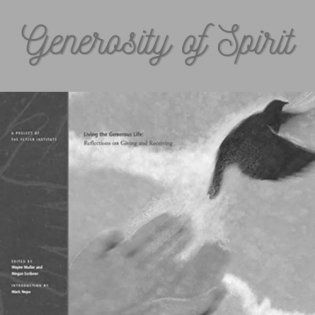Forgiveness
The learners explore folktales related to forgiveness. They investigate how compassion is interrelated with forgiveness, and describe challenges to real forgiveness.
The learner will:
- identify the historical and geographic settings of folktales.
- identify the message and connections to philanthropy.
- identify real-life situations that are modeled in the stories.
Youth access to these folktales (Learning to Give has permission to make these folktales available online to readers)
Discuss the importance of families in society and analyze why it is so important for family members to be open to forgiveness.
- "Both Friend and Foe the Saints Adore." Sri Ramakrishna Math. Tales and parables of Sri Ramakrishna. Madras: Sri Ramakrishna Math, ©1947. pp. 201-202. Used with the permission of Sri Ramakrishna Math. www.sriramakrishnamath.org
- Conley, Craig. "Birdwatching Among the Ruins: Mexico’s Mythical Macaws," Words Worth: Celebrating Talking Birds in the News, history, Mythology, Literature & More Home Page. (1999) http://www.blueray.com/wordsworth/mythology/mayan.html
- His Holiness the Dalai Lama, "Om Mani Padme Hum," from The Government of Tibet in Exile
- Manindra and Manjusha Mishra. "Sri Ramakrishna and His Teachings," from Brahman Samaj of North America.
- "The Little Boy Who Talked with Birds." Montejo, Victor. The Bird Who Cleans the World and Other Mayan Fables. Willimantic, CT: Curbstone Press, ©1992. Used with the permission of Curbstone Press. www.curbstone.org "The Little Boy Who Talked with Birds" by Victor Montego, from The Bird Who Cleans the World (Curbstone Press, 1992). Reprinted with permission of Curbstone Press. Distributed by Consortium."
- "The Young Man Who Refused to Kill." Hyde-Chambers, Fredrick and Aubrey. Tibetan Folk Tales. Boulder & London: Shambhala, ©1981 pp. 76-82. Used with the permission of Shambhala Publications, Inc. "From TIBETAN FOLK TALES by Frederick and Audrey Hyde-Chambers, ©1981. Reprinted by arrangement with Shambhala Publications, Inc., Boston, www.shambhala.com."
Instructions
Anticipatory Set:
Discuss the quotation, "To err is human; to forgive divine." (from "An Essay on Criticism," by Alexander Pope). Ask the learners what makes forgiveness divine. What is difficult about forgiveness, and what makes it important and healthy for self and others?
One of these stories, "Both Friend and Foe the Saints Adore," is from India. On a map, locate India’s absolute location (longitude and latitude) and relative location (general descriptors of where the place is located). Describe India's physical characteristics and human characteristics.
Read the story "Both Friend and Foe the Saints Adore" together and discuss the message and connection to philanthropy.
- What clues are there in the story as to the character of the monk? What does he mean when he tells the other monk, "Brother, he who beat me is now giving me milk"?
- Look up Sri Ramakrishna and identify his teachings in the story. He was a Hindu holy man who lived near Calcutta in the nineteenth century. A man who could neither read nor write, he used stories to explain his teachings to others.
- What is the lesson or philanthropic connection?
- Why is this a good title for the folktale?
- Although the folktale very heavily depends on Indian culture, why does the story have universal appeal?
Read "The Young Man Who Refused to Kill" together and discuss the message and connection to philanthropy.
- Buddhism teaches not to harm others, including animals. Thus, the act of killing animals for food causes the problem within this tale.
- What is the meaning of the chant, "Om Mani Padme Hum"?
- The chant calls upon Chenrezig, who is compassionate, for blessings. How is compassion evident in Tashi’s forgiveness of his father at the end of the story?
- What do you think is the primary reason for Tashi's father’s malevolent behavior toward him?
- Although the folktale very heavily depends on Tibetan culture, why does it have universal appeal?
Explain that the Mayan folktale, "The Little Boy Who Talked with Birds," is also a story of forgiveness. The Mayans lived in present-day southern Mexico, Guatemala, western Honduras, El Salvador, and northern Belize. The Mayan word "mut" means both "bird" and "prophesy". Since the Mayans believed that birds could speak and prophesy, it is not surprising in the story that the father becomes upset when he believes his son can interpret the sounds of the birds but will not share the information.
Read "The Little Boy Who Talked with Birds" together and discuss the message and connection to philanthropy.
- The stern father worried that his son was losing respect for him and that the boy would humiliate him. Because of his fears, the father began to treat the boy more unjustly and threw his son out of the family home. Why was he so fearful?
- What examples are there of something like this that happens in real life?
- Is it reasonable for this family to experience peace and happiness after the unjust treatment?
- Why is it important for family members to forgive each other? What challenges must a person who forgives be willing to face?
Share the three statements about forgiveness shown below. Ask youth to find at least one example from the folktales that supports one of the quotes. Discuss a real life example of when the statement might apply.
- "Those who cannot forgive break the bridge over which they themselves must pass." Confucius
- "The weak can never forgive. Forgiveness is the attribute of the strong." Gandhi
- "If you can’t forgive, don’t ask to be forgiven." Anonymous
Philanthropy Framework
-
Strand PHIL.I Definitions of Philanthropy
-
Standard DP 06. Role of Family in Philanthropy
-
Benchmark HS.1 Discuss the role of family life in shaping a democratic society.
-
-
-
Strand PHIL.III Philanthropy and the Individual
-
Standard PI 01. Reasons for Individual Philanthropy
-
Benchmark HS.1 Define and give examples of motivations for giving and serving.
-
-
